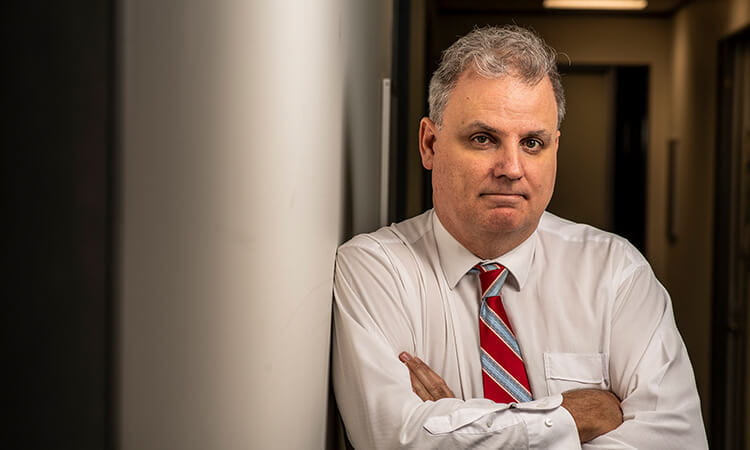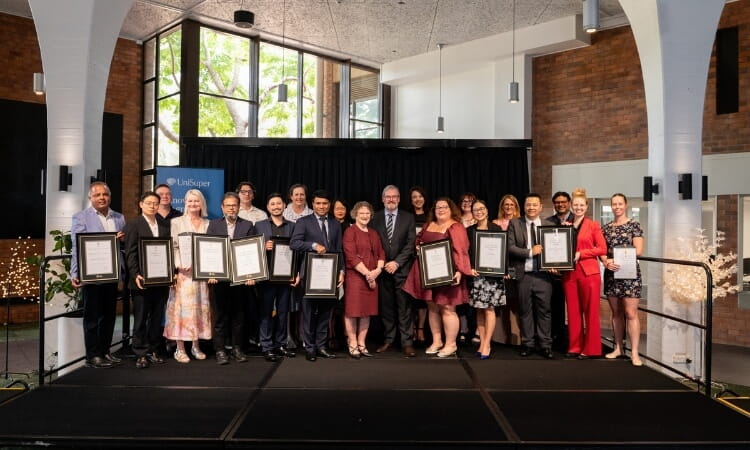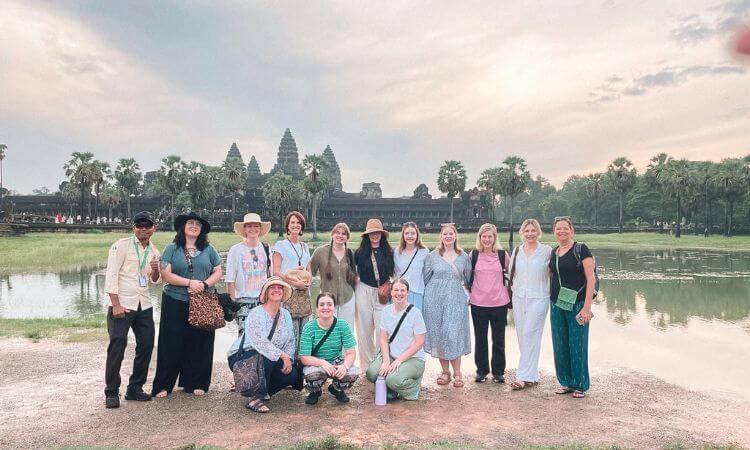Associate Professor Martin Kerby’s parents told him he’d be ‘digging ditches’ without an education.
Today, he couldn’t be further from holding a shovel – but he has made a career out of digging up precious stories about Australia’s military history and embedding them in modern day classrooms.
Martin Kerby never made the decision to go to university. Instead, he said he picked it up by osmosis via his Irish Catholic parents.
“University was very much viewed in our household as a means to facilitate socio economic advancement,” he said.
“The pursuit of university was always about pursuing a job, a career – not a useless pursuit of knowledge for knowledge’s sake.”
The Brisbane-born and raised Associate Professor remembers giving homework to his parents to be signed, only to have them mark it up and give it back to him across the dining room table – unsigned.
“Apparently the teacher would judge us as a family if they signed homework that was anything less than perfect,” Martin laughed.
Graduating high school in 1984, a young Martin Kerby headed from Kedron across the Brisbane River to study a Bachelor of Arts, majoring in history and geography.
“Driven by the attitude that university was about being prepared for a job, I really didn’t make the most of the university lifestyle,” he said.
“I didn’t move in academic circles or join any clubs. I was the prince of the nerds and very okay with that! I saw gaining my degree as something close to an apprenticeship though I did recognise that success is a habit.
“You don’t win the premiership on the day, do you?”
Upon gaining his degree, Martin completed one year of teaching training, followed by a decade working at a girl’s college at Bracken Ridge on Brisbane’s north side.
Then he landed at Brisbane’s prestigious – and soon to be career-altering – Nudgee College.
“Turning points are retrospective but when I first arrived at Nudgee I wandered around the school and found myself intrigued by the military honour boards. They were housed outside the college’s chapel, which was opened in 1916, and remains one of the most stunning buildings on campus,” Martin said.
“I looked at the names on those honour boards and started to wonder – who were these Nudgee old boys and how had they died and where were they buried?
“I got very focused about it but was surprised to find that the college had very little information other than their names and the years they attended Nudgee. I was encouraged to put an application together to fill that gap in the college’s history.”
The history teacher drew up a plan to visit relevant locations in Great Britain, France, Belgium, and Germany where the soldiers were buried.
“I was so excited by the idea, but it was also a bit ambitious to be asking the College to pay a teacher to visit the graves of ex-students and travel through Europe for three weeks, along with accommodation and travel expenses, as well as film support to document the process,” Martin said.
Nevertheless, the proposal was approved by the College board, and it started a new chapter of Martin’s research into the history of conflict and how it is represented artistically and culturally.
“I wrote the book 'Undying Echoes: A History of Nudgee College at War' in 2002 and some years later, ‘Nudgee ANZACS’,” he said.
“It was my first book, and we must all start somewhere, and that research was a starting point for which I’m forever grateful for.
“That trip, in the footsteps of young Queenslanders, schooled me. It emphasised the cost of war and helped drive me to record the experiences of those who lived during these tumultuous times.
“As my interests developed, I then began to explore how society has sought to explain conflict through literature and art, ranging from war memorials to children’s picture books.
“Currently I am researching the Frontier Wars, a conflict fought on Australian soil – indeed there is a battlefield on the edge of Toowoomba – and which is often overlooked, but it is the First World War which remains my primary interest.”
After 20 years teaching in Queensland schools, Martin left the classroom after completing a PhD (and then a second one), to focus on tertiary education and his burgeoning research interests.
He’s now been teaching at the University of Southern Queensland for nearly eight years, with a focus on his first great, enduring love instilled in him by his parents – education.
“I’d had my heart set on a position as a history lecturer but when a position came up with the School of Education, I knew it was the right place for me, while still allowing me to pursue my research,” he said.
“University life this time around as an academic and lecturer is fantastic – spectacular even. The University of Southern Queensland is an incredible place to both learn and teach with a wide range of research focuses that are all supported equally, which is a special thing.
“I’ll never complain about life in academia. After 20 years of playground duty in 100 per cent humidity, I know I’m going to live longer doing this job!”
And thanks to his work, the legacy of the ANZACS will live longer too.
Along with fellow University of Southern Queensland academics, Professor Margaret Baguley, Senior Lecturer Richard Gehrmann and Dr Alison Bedford, he recently launched an open textbook – ‘A Possession Forever: A guide to using commemorative memorials and monuments in the classroom’.
Published to help students assume the role of historians and understand how historical events have shaped diverse views, Martin said he’s openly enthusiastic about his love of combining education and history – especially on days like ANZAC Day.
“Understanding the ANZAC legend – both the genuine heroics of servicemen and women, and less glorious and less inclusive parts of our military history – is vital to understanding a core part of Australia’s national identity, both in the past and how it presents today.”



